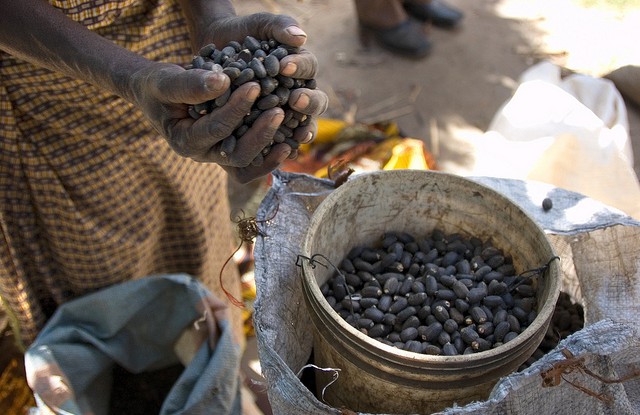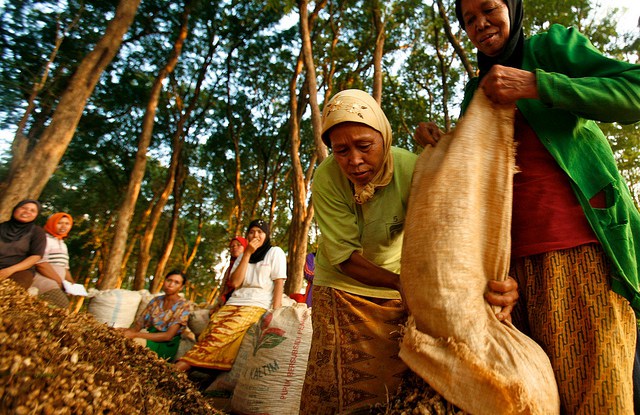
Development experts have long suspected income from forests and other natural environments to be critical for millions of poor people. But what they have not known is to what extent — development actions related to forests and livelihoods have been based largely on fragmented data. Often, data on forest-based incomes were lumped in with agriculture, if counted at all.
That could change. A newly released global study led by the Center for International Forestry Research (CIFOR) on the links between livelihoods and environment has amassed a mountain of data — more than 8,300 household surveys in 333 villages in 24 developing countries — and has both confirmed some suspicions and punctured much of our conventional wisdom about environmental income. The study, which is the product of the Poverty and Environment Network (PEN), found that the world’s rural poor are more dependent on forest and environmental resources than is commonly realized. Among the findings:
- Income from natural forests and other natural areas accounted on average for 28 percent of total household income, nearly as much as crops.
- Men generated at least as much income from forests as women do, contradicting long-held assumptions.
- Forests were less important than previously believed as “safety nets” in response to shocks and as gap fillers between seasonal harvests.
- State forests generated more income than private or community forests.
- While the most destitute of poor farmers are often blamed for deforestation, they played only a modest role in forest clearing.
Even some 10,000 years after the start of the Agricultural Revolution, rural people in developing countries still depend strongly on foraging from nature for their livelihoods.
The significance of these findings cannot be understated, as our large sample is fairly representative for a variety of rural settings in developing countries — except for some of the most forest-poor and population-dense. The size of incomes harvested from the wild — from such products as fuelwood, timber, meat, plants, and other resources — has until now been poorly documented and so has largely flown under the radar of most policymakers. Existing tools that assess poverty and income — poverty reduction strategies, the World Bank’s Living Standard Measurement Study Surveys (LSMS), national income accounting systems — often fail to adequately capture the importance of income from natural resources. Thus nature’s direct value to the livelihoods of the world’s rural poor has remained largely invisible.
Quantifying the contribution of environmental income to total income portfolios is important for understanding the livelihoods of rural people, and the extent and determinants of poverty and inequality. We also know more about how much rural people are likely to lose if they lose access to the forest, or if these forests are degraded or converted to other uses. Related to the climate debate, the findings suggest that there are important local benefits of maintaining forest cover and that the potential for both climate mitigation and livelihood benefits might be larger than often assumed.
Simply ignoring the large “hidden harvest” from forests and the environment risks giving rise to policies or reforms that strip local people from access to extractive resources — and moreover, policy interventions intended to address poverty through improved market access and integration may undermine forest conservation efforts. Given one of the study’s crucial findings — that people with relatively higher incomes are responsible for a larger share of deforestation and forest product extraction than the poorest — an increase in assets and income of rural households could provide the means to increase forest clearing and use.
The findings will provide a reference point for future studies, with the papers (published in a special issue of World Development) now available for free download on the PEN website, cifor.org/pen. The findings could also be used to design country-specific surveys that can account for the full picture of environmental incomes in a given area by focusing on the locally most important products.
Based on the PEN results and methodological experience, CIFOR is currently working with the World Bank, the UN Food and Agriculture Organization (FAO), and other partners to strengthen forestry statistics in the World Bank’s Living Standard Measurement Study Surveys (LSMS). The aim of the LSMS is to improve the type and quality of household data collected by statistical offices in developing countries, with the goal to foster increased use of household data as a basis for decision-making about policies affecting human welfare.
The PEN project with its methods, data set and findings can spur a sea change in how researchers, development practitioners and policy makers think about the value of forests to millions of people around the world. Just counting the value of the products provided freely by nature will not in itself change the lives of the poor, but incorporating them in policy making can help design and implement policies that improve their lives.
We want you to share Forests News content, which is licensed under Creative Commons Attribution-NonCommercial-ShareAlike 4.0 International (CC BY-NC-SA 4.0). This means you are free to redistribute our material for non-commercial purposes. All we ask is that you give Forests News appropriate credit and link to the original Forests News content, indicate if changes were made, and distribute your contributions under the same Creative Commons license. You must notify Forests News if you repost, reprint or reuse our materials by contacting forestsnews@cifor-icraf.org.
